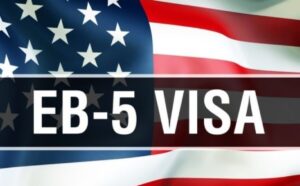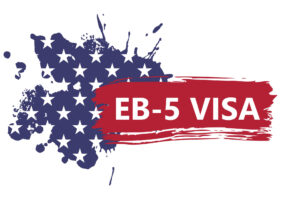The pursuit of a new life and opportunities in the United States has long captivated the dreams of countless individuals around the globe. While traditional pathways to U.S. citizenship have primarily relied on family ties, employment opportunities, or asylum, an exclusive avenue known as the EB-5 Immigrant Investor Program offers a unique and enticing opportunity for foreign investors to attain US citizenship by investment.
Often regarded as the “golden visa” program, the US Citizenship by Investment was established by the U.S. government to promote economic growth and create jobs within the country. By channeling foreign investments into qualified projects, this program not only benefits the investors but also contributes significantly to the development of the American economy.
In this comprehensive guide, we delve into the intricacies of US Citizenship by Investment (EB-5 program), exploring its origins, eligibility criteria, investment requirements, and the path it offers towards becoming a U.S. citizen. Additionally, we will examine the potential benefits and risks associated with the program, shedding light on the process of obtaining lawful permanent residency, and ultimately, the highly sought-after status of U.S. citizenship.
Overview of the EB-5 Immigrant Investor Program:

The US Citizenship by Investment is a unique pathway that allows foreign investors and their immediate families to obtain lawful permanent residency (Green Card) in the United States by making a substantial investment in a new commercial enterprise that creates jobs for U.S. workers. This program was established to stimulate economic growth, attract foreign investment, and create employment opportunities for American citizens.
Benefits of the US Citizenship by Investment:
- Permanent Residency: The primary benefit of the EB-5 program is the opportunity to obtain lawful permanent residency in the United States for the investor, their spouse, and unmarried children under 21 years old. This grants them the right to live, work, and study in the U.S. without any restrictions.
- No Sponsorship Required: Unlike other immigration pathways that often require sponsorship from a family member or employer, the EB-5 program allows investors to self-sponsor themselves and their families.
- Freedom of Movement: Green Card holders under the EB-5 program have the freedom to travel in and out of the United States without the need for a visa. This flexibility can be highly advantageous for those who frequently travel for business or personal reasons.
- Education and Healthcare Benefits: EB-5 investors and their families have access to the U.S. education system, including in-state tuition rates at public universities. They can also access the country’s healthcare system, although certain provisions may apply.
- Path to U.S. Citizenship: After holding a Green Card for a certain period and meeting specific residency requirements, EB-5 investors can apply for U.S. citizenship, further solidifying their ties to the country.
READ ALSO: H1 Visa USA: A Gateway to Skilled Opportunities
Creation and Purpose of the EB-5 Immigrant Investor Program:
The EB-5 Immigrant Investor Program was established as part of the Immigration Act of 1990, signed into law by President George H.W. Bush. Its creation was driven by several key objectives:
- Job Creation: One of the primary purposes of the EB-5 program is to stimulate job creation in the United States. By requiring foreign investors to invest in new commercial enterprises that generate employment opportunities for U.S. workers, the program aims to boost economic growth and development.
- Foreign Investment Attraction: The U.S. government recognized the potential benefits of attracting foreign capital to the country. By offering a pathway to permanent residency, the EB-5 program entices investors from around the world to contribute their resources to American businesses and projects.
- Diversification of Capital Sources: The program sought to diversify sources of funding for businesses and projects within the United States. By tapping into foreign investment, the country could access a broader range of capital inflows.
Requirement for US Citizen by Investment

- Investment Amount: To qualify for the US Citizenship by Investment, an investor must make a minimum capital investment of $1.8 million. However, if the investment is made in a targeted employment area (TEA), which is an area with high unemployment or a rural area, the minimum investment is reduced to $900,000. TEAs are designated to encourage investment in areas that need economic development.
- Job Creation: The investment must lead to the creation or preservation of at least 10 full-time jobs for qualifying U.S. workers. These jobs must be created within two years of the investor’s admission to the United States as a Conditional Permanent Resident.
- Investment in a New Commercial Enterprise: The capital investment must be made in a “new commercial enterprise,” which can be either a for-profit business or a regional center project. A new commercial enterprise is generally a business established after November 29, 1990, or one that has undergone a significant restructuring or expansion leading to a 40% increase in net worth or employees.
- Lawful Source of Funds: The investor must demonstrate that the invested funds come from a lawful source, such as business earnings, salary, sale of property, inheritance, or a gift. Documentation proving the legality of the funds is an essential part of the application process.
- Active Management or Policy Formulation Role: While the EB-5 program does not require the investor to actively manage the day-to-day operations of the business, the investor should play a policy-making role. Alternatively, the investor can also participate in a regional center project, where management responsibilities are handled by the regional center.
- I-526 Petition Approval: The investor must file an I-526 petition with the U.S. Citizenship and Immigration Services (USCIS), providing evidence that all the program requirements have been met. Upon approval of the I-526 petition, the investor and their immediate family can apply for conditional permanent residency.
- Removal of Conditions: After approximately two years of being a conditional permanent resident, the investor must file an I-829 petition to remove the conditions on their Green Card. This involves demonstrating that the required jobs have been created and that the investment remains in compliance with program regulations.
How to Apply for US Citizen by Investment

- Research and Consultation: Begin by thoroughly researching the US Citizenship by Investment, its requirements, and the investment options available. Consider consulting with experienced immigration attorneys who specialize in EB-5 cases to understand the process better and determine if this pathway is suitable for your circumstances.
- Identify and Make an Investment: Select an eligible new commercial enterprise in which you wish to invest. Determine whether you will invest $1.8 million or $900,000 (in a targeted employment area). Ensure that the funds for the investment come from a lawful source, and gather the necessary documentation to demonstrate the origin of the funds.
- File the I-526 Petition: Prepare and file the I-526 petition with the U.S. Citizenship and Immigration Services (USCIS). This petition must include evidence supporting your investment, the creation of jobs, and compliance with program requirements. USCIS will review your petition, and if approved, you will receive conditional approval for permanent residency.
- Obtain Conditional Permanent Residency: Upon approval of the I-526 petition, you and your immediate family (spouse and unmarried children under 21) can apply for a conditional Green Card through consular processing if you are outside the U.S., or through adjustment of status if you are already in the U.S. in another valid immigration status.
- Move to the U.S. and Establish Your Business: Once you receive your conditional Green Card, you can move to the United States. If you invest through a regional center, you may not need to actively manage the business, but if you invest directly, you should play a policy-making role.
- File the I-829 Petition: Approximately two years before the expiration of your conditional Green Card, you must file the I-829 petition to remove the conditions and obtain a permanent Green Card. This petition should demonstrate that you have met the job creation requirements and that your investment remains in compliance with the program.
- Apply for U.S. Citizenship (Optional): After holding a permanent Green Card for at least five years (or three years if married to a U.S. citizen), you may be eligible to apply for U.S. citizenship through the naturalization process.
Conclusion
For those considering the US Citizenship by Investment, thorough research, and professional guidance from experienced immigration attorneys are crucial to understanding the requirements and ensuring a smooth application process. While the program offers a unique opportunity to establish ties to the United States through investment, it’s essential to stay informed about any updates or changes in immigration policies that may affect eligibility or procedures.
By taking these necessary steps, aspiring investors can embark on a journey towards lawful permanent residency in the United States, potentially leading to the fulfillment of their dreams of a new life and prosperous opportunities in the land of the free.